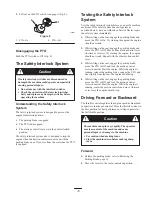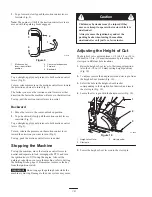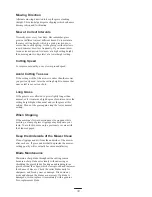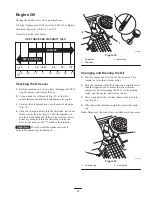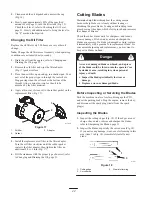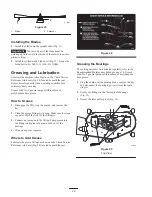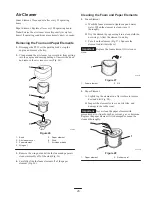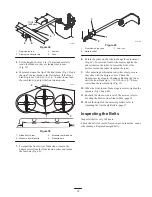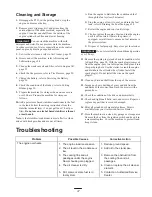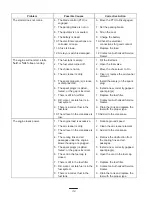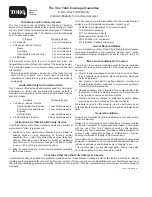
29
1. Park the machine on a level surface, to ensure that the
fuel tank drains completely. Then disengage the PTO,
set the parking brake, stop the engine, and remove the
key.
2. Close the fuel shut-off valve located under the front of
the fuel tank.
3. Loosen the hose clamp at the fuel filter and slide it up
the fuel line away from the fuel filter (Fig. 34).
4. Pull the fuel line off of the fuel filter (Fig. 34).
5. Open the fuel shut-off valve. Allow gasoline to drain
into a gas can or drain pan.
Note: Now is the best time to install a new fuel filter
because the fuel tank is empty.
6. Install the fuel line onto the fuel filter. Slide the hose
clamp close to the fuel filter to secure the fuel line
(Fig. 34).
3
1
2
m–5140
Figure 34
1.
Fuel filter
2.
Hose clamp
3.
Fuel line
Replacing the Fuel Filter
Replace the fuel filter after every 200 operating hours or
yearly, whichever occurs first.
Never install a dirty filter if it is removed from the fuel line.
1. Disengage the PTO, set the parking brake, stop the
engine, and remove the key.
2. Close the fuel shut-off valve located under the front of
the fuel tank.
3. Squeeze the ends of the hose clamps together and slide
them away from the filter (Fig. 34).
4. Remove the filter from the fuel lines.
5. Install a new filter and move the hose clamps close to
the filter (Fig. 34).
6. Open the fuel shut-off valve.
Tire Pressure
Maintain the air pressure in the front and rear tires as
specified. Uneven tire pressure can cause uneven cut.
Check the pressure at the valve stem after every 50
operating hours or monthly, whichever occurs first
(Fig. 35). Check the tires when they are cold to get the most
accurate pressure reading.
Rear Tires: 13 psi (90 kPa)
Front Tires (castor wheels): 35 psi (139 kPa)
m–1872
1
Figure 35
1.
Valve stem

